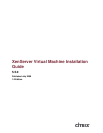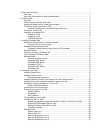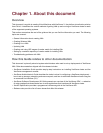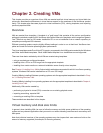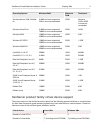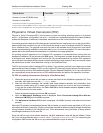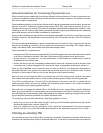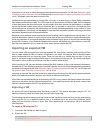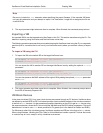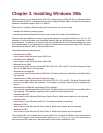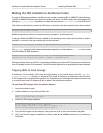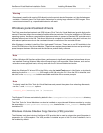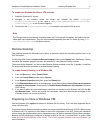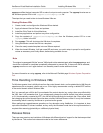
XenServer Virtual Machine Installation Guide Creating VMs 5
General Guidelines for Virtualizing Physical Servers
When considering how to best begin virtualizing a collection of physical servers, it is best to gain some com-
fort level and experience with virtualizing servers that are more simply configured, moving later to servers
with more complex configurations.
Good candidates typically include servers that are used for test and development environments, and servers
used for in-house IT infrastructure (intranet web servers, DNS, NIS, other network services, and so on).
Typically servers that are running CPU-intensive workloads (sophisticated mathematical modeling, video
rendering) or are I/O-intensive (high-traffic commercial web sites, highly-used database servers, streaming
audio/video servers) are not the best candidates for virtualization.
Once you have identified some physical servers that seem reasonable to work on first, examine how you are
currently using them. What applications are they hosting? How I/O intensive are they? How CPU-intensive
are they?
To make a reasonable assessment, gather a reasonable amount of data on the current physical servers
that you are considering virtualizing. Look at system monitoring data for disk usage, CPU usage, memory
usage, and network traffic, and consider both peak and average values.
Good candidates for virtualization are:
• servers whose CPU and memory usage and NIC and disk throughput are low will be more likely to coexist
as a VM on a XenServer host with a few other VMs without unduly constraining its performance.
• servers that are a few years old - so their performance as VMs hosted on a newer server would be
comparable to their existing state.
• servers that do not use any incompatible hardware which cannot be virtualized, such as dongles, serial
or parallel ports, or other unsupported PCI cards (serial cards, cryptographic accelerators, and so on).
Once you have identified a set of machines that you want to virtualize, you should plan the process to
accomplish the task. First, provision the physical servers that will serve as your XenServer hosts. The chief
constraint on the number of VMs you can run per XenServer host is system memory.
Next, plan how you will create the VMs. Your choices are to P2V an existing server, install a fresh server
from network-mounted vendor media, or install a base operating system using a pre-existing template.
If you P2V an existing server, it is best to P2V a test instance of the server, and run it in parallel with the
existing physical server until you are satisfied that everything works properly in the virtual environment
before re-purposing the existing physical machine.
Next, plan how to arrange the desired VMs on the XenServer hosts. Assign VMs to specific XenServer
hosts, giving consideration to complementary resource consumption (mixing CPU-intensive and I/O-inten-
sive workloads) and complementary peak usage patterns (for instance, assigning overnight batch process-
ing and daytime interactive workloads to the same XenServer host).
For configuring individual VMs themselves, keep these guidelines in mind:
• assign only one core to a VMs unless the VM is serving a multi-threaded application that will perform
demonstrably better with a second virtual CPU.
• when you configure the memory settings for a VM, consult the documentation of the guest operating
system you plan to run on that VM and the documentation of the applications you plan to run on them.
Cloning an existing VM
You can make a copy of an existing VM by cloning from a template. Templates are ordinary VMs which are
intended to be used as master copies to instantiate VMs from. A VM can be customized and converted into



